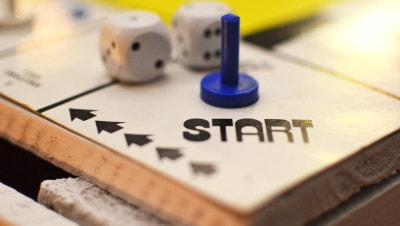 In Part I of this series I described how to find the galleries that might be right for you, and how to make yourself visible to them. So what comes next? Think of your relationship with a gallery as a gradual courtship. You both learn more at each stage and then decide whether you’ll make a commitment. Your first connection might be in person, or on the telephone, or in an email exchange. Since you can’t predict when or how this will happen, get ready now. Remember, you’re preparing to have a conversation, not give a speech. You’ll want to be brief, positive, and honest as you describe your background. Here are five areas to think about:
Your body of work Galleries are looking for what they call “a coherent body of work.” This usually means 12-20 pieces of completed work, ready to show, or enough to fill one of their gallery spaces. You’ll need fewer pieces if they start out by including you in a small group show. “Coherent” doesn’t mean that your work is all the same, only that it is unified by theme, materials, technique, or point of view. In a gallery setting, your art should look like it belongs together. Your intentions and process If you’ve spent the time to create a strong artist statement, you’ve got this covered. When talking with a gallery, you might describe what inspires you, or how your work connects with issues you care about, or how you use materials. Just tell them what your art is all about. Your exhibition history Most galleries expect you to have some experience showing your work. If you’re an emerging artist, you might have shown in juried group exhibitions, or in local cafes or bookstores, or at Open Studios. Don’t apologize for anything you haven’t done yet. After all, you’re looking for a gallery because you want to reach a wider audience. Pricing and sales history This is a tricky area, especially if you haven’t sold much work. A gallery will help you set fair prices for your work, so if you think your prices are too low, say so. They do want to know about previous sales, but it’s OK if you’ve mostly sold to friends and family. Your audience (includes social media presence) Galleries are interested in the audience you attract. Think about the kinds of people who respond to your art. If you have enough information, cite demographics such as age, income, geography, etc., to provide a profile of your potential audience. If you are active on social media, talk about not just the number of followers but how they respond to your work. Remember, you’re preparing for a conversation and will get to ask questions of your own. Here are five good ones:
Everything you learn in early conversations will help you be effective when it is time to negotiate a contract with a gallery. In the next part of this series I’ll explain how to do that, and show you what a good gallery contract looks like. Mary Edwards, Ph.D. I am a Career & Life Coach for Artists. Visit www.coachingforartists.com to find out more or email me directly at [email protected] to send a comment or ask a question. *Please note: I recently published a longer version of this article in the April Newsletter for www.callforentries.com. This is a well-curated site which lists open calls for artists and photographers. Take a look, you can join for free! Comments are closed.
|
Mary's BlogAs an artist coach, I bring a unique combination of business knowledge, art world experience, and professional coaching skill to my practice. |